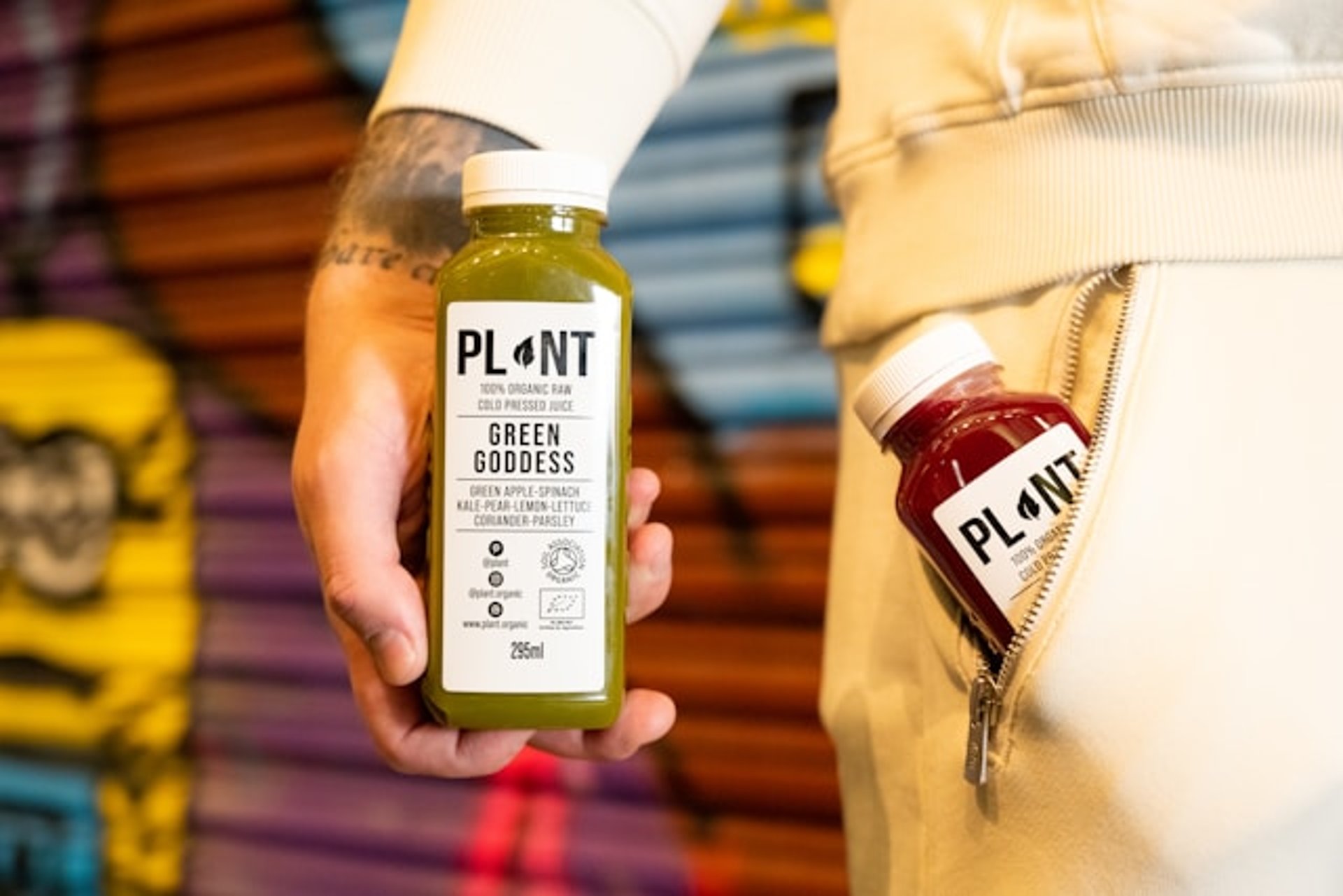What to Eat After a Juice Cleanse
Wondering what to eat after a juice cleanse? Learn how to reintroduce real food, starting with gentle, nourishing options like cooked vegetables, fruit, and whole grains.
LIFESTYLE
7/15/20255 min read

7 Tips for a Wholesome Diet After a Juice Cleanse
You’ve completed your juice cleanse. You made it through the green juices, fruit blends, and maybe even a few cravings. That’s a great feeling.
But now you’re probably wondering: what happens next? What you eat after the cleanse is just as important as what you drank during it. If you jump straight into burgers, fries, or heavy meals, you might experience bloating, fatigue, or worse.
Your body has spent a few days consuming only liquid nutrition. Your digestion had had a break. The goal now is to gradually reintroduce solid food with simple, gentle, satisfying, and easy-to-digest meals.
This is how you can go about it in a way that nurtures your recovery and doesn't stress your stomach.
#1. Avoid meat, dairy, and processed foods.
It's not about eliminating these foods permanently. Just give your body time to adjust. Meat and dairy are harder to digest. Processed snacks with added sugar or preservatives can negate the effects of your regimen. Treat your body to a healthy diet for a few days before reintroducing these foods.
When you're ready to reintroduce them, do it gradually. This way, you'll know what it is if something makes you uncomfortable.
#2. Have cooked vegetables.
Cooked vegetables are a great way to return to solid food after a detox. They're warm, comforting, and easy on the stomach. Consider steamed carrots, zucchini, sweet potatoes, or pumpkin, for example. These foods are soft but rich in fiber, and therefore are quite useful in slowly and safely getting your digestion back on track.
You can drizzle them with a little olive oil and add a pinch of sea salt. Keep the seasoning light at first and avoid overly spicy or strong dishes for the first one or two days.
#3. Eat fruit, but in small quantities.
You've already had a lot of fruit in your juices, but now you can enjoy it in all its fullness. Bananas, berries, watermelon, and baked apples are good choices.
But don't overdo it right away. Begin with one or two servings a day and see how you feel. If your stomach feels good, you can increase the variety and quantity over the next few days. Fruit helps you stay hydrated, gives you natural energy, and makes the cleanse benefits last.
#4. Include simple grains like rice and oats.
After a day or two of fruits and vegetables, your body will be ready for something more filling. Brown rice, quinoa, oatmeal, and toast are simple carb sources that are easy on your gut and won't cause discomfort.
You can cook your grains with water or low-sodium vegetable broth. For a more complete meal, add some cooked vegetables or a few slices of avocado. Avoid butter, cheese, or creamy sauces for now. Keep things simple.
#5. Eat small meals more often.
Your body may not be ready for large meals right away. Divide them into small portions and eat every 2 to 3 hours. This will avoid overloading your stomach and keep your energy levels stable throughout the day.
Think of it as a gradual buildup: a soup here, a small salad there, maybe a smoothie in between. Soo, you'll ease back into your usual portion size with no feelings of nausea or upset stomach.
#6. Don't skip the water.
You've hydrated with juice, but don't forget to drink plain water. Your body still needs plenty of fluids to keep everything moving and flush out anything your body is still eliminating after cleansing.
Try drinking warm water with lemon in the morning. This will wake up your digestion. Herbal teas like peppermint or ginger tea can also soothe your stomach if you're feeling a bit unwell.
#7. Listen to your body.
Everyone reacts differently after a cleanse. Some feel immediately energized. Others may feel a little tired or even get a headache. This is normal. The important thing is to pay attention to your body's signals.
If you feel sluggish, bloated, or uncomfortable, take a step back. Return to simple foods and try again in a day or two. You're not doing anything wrong. It just means your body needs more time.
#8. Keep the good habits going.
A juice cleanse can reset your eating habits, but the real goal is to build something lasting. Continue to incorporate fruits, vegetables, and whole foods into your daily meals. Try to cut back on sugar and fried foods. That doesn’t mean you can’t enjoy treats—it just means finding a better balance in the future.
Also, bear in mind that you don’t need to be perfect. Just pay attention to what you eat and how it makes you feel. That’s how a short juice cleanse turns into long-term change.
Common Questions About Eating After a Juice Cleanse
1. Can I eat eggs after a juice cleanse?
Yes, but wait at least two to three days before eating eggs. If you must, opt for boiled or poached eggs instead of fried ones. Eggs are a good source of protein but may feel heavy on the stomach if eaten too soon.
2. How soon can I eat meat again?
It’s best to wait at least 3 to 5 days after your cleanse before eating meat. Choose lean options like grilled chicken or fish in small portions. Make sure your digestive system has calmed down before adding meat to your meals.
3. Can I drink coffee right after a juice cleanse?
Avoid coffee for at least one to two days after the cleanse. Your body is still sensitive, and caffeine can cause jitters or stomach upset. If you really need your coffee fix, get yourself half a cup or a weaker brew.
4. What’s the best first meal after a juice cleanse?
A bowl of steamed vegetables or a pureed vegetable soup is a great first meal. It’s warm, gentle, and easy to digest. You can add a small portion of brown rice or quinoa for extra energy.
5. Are smoothies okay after a cleanse?
Yes, smoothies are a great way to transition back to solid food. Use simple ingredients like bananas, berries, spinach, and water or plant-based milk. Keep it light and skip protein powders or nut butters at first.
6. Can I eat bread after a cleanse?
Whole grain or sprouted bread is fine in small amounts after the first few days. Avoid heavily processed white bread or loaves with lots of toppings. Toast it and eat it with some avocado for a gentler option.
7. How can I avoid bloating after a juice cleanse?
Reintroduce foods slowly and chew thoroughly. Stick with soft, cooked foods and avoid raw vegetables, beans, or dairy at first. Drinking plenty of water also helps reduce bloating and supports digestion.
8. Is it normal to feel tired after a cleanse?
Yes. Your body is adjusting to eating again and may need energy to restart the digestive process. Focus on light meals, get plenty of rest, and stay hydrated. Your energy levels usually return to normal in a few days.
9. Should I count calories after a juice cleanse?
You don’t need to count calories right away. Focus on healthy, whole foods that make you feel good. Once your meals are back to normal, you can decide whether tracking calories is helpful for your goals.
10. What if I accidentally eat too much?
Don’t panic. If you feel bloated or sluggish, go back to light meals the next day. Drink water, get some rest, and don’t beat yourself up. One heavy meal doesn’t undo your progress. It’s all part of learning.
11. Can I work out right after a juice cleanse?
Light activity like walking or stretching is fine. But wait a day or two before doing heavy lifting or intense cardio. Your energy may still be low and your body needs time to fully recover its strength.
12. How can I make the benefits last?
Keep eating more whole foods and fewer processed snacks. Try cooking more meals at home and notice how your body responds to different ingredients. A cleanse is just a reset; the real transformation happens afterward.
Explore
Welcome to Stay Curious – the blog where questions never get old and answers are always a little bit unexpected. Here, we challenge the status quo, dig into the weird and wonderful, and offer insights that might just make you think, “Why didn’t I know this sooner?”
From quirky facts to deep dives into the everyday mysteries of life, we’re all about satisfying that itch for knowledge you didn’t even know you had.
So, go ahead—stay curious. We promise it’ll be worth your while. Or, you know, not.
Contribute
Learn
ask.staycurious@gmail.com
© 2025. All rights reserved.
We welcome guest posts on business, tech, travel, finance, lifestyle, career, relocation, and home improvement. Submissions must be original, unpublished (online), at least 800 words, and written in English.
Ready to contribute? Contact us with your ideas!
